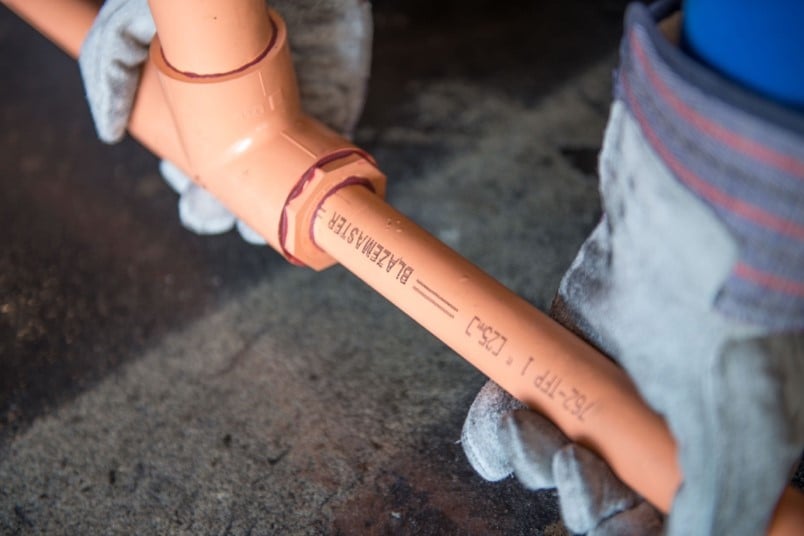7 Tips for Solvent Cement Welding of CPVC Pipe in Hot Weather
Our one-step solvent cement joining method provides a quick, simple, safe, and reliable way to join BlazeMaster® CPVC piping and fittings. However, it’s important to consider the temperature at the job site, because solvent cement can function a bit differently in hot or cold environments.
Keep in mind that solvent cement is not glue, though the terms are sometimes used interchangeably. Solvent cement is a chemical compound that works at the molecular level to enable a piece of CPVC pipe to fuse with a fitting. This creates one continuous piece of plastic and makes the joints the strongest parts of the piping system.
How to Beat the Heat
BlazeMaster solvent cement is tested and listed for use in temperatures as low as 0oF (-17oC) and as high as 120oF (49oC). In hot environments, solvents will penetrate surfaces more deeply. That requires installers to follow a few simple guidelines to ensure a quality project.
- Keep the pipe, fittings, and solvent cement in shaded areas. Direct sunlight can increase the surface temperatures by 20oF (-6oC) to 30o F (-1oC) above the air temperature. Store the pipe and fittings (or at least the ends to be solvent welded) out of direct sunlight prior to cementing.
- If the air temperature rises above 120oF (49oC), join the pipe in the cooler parts of the day. Particularly if the project is in an exposed area, work in the morning or evening if possible.
- Take extra care to avoid puddling inside the joints. Solvents attack hot surfaces faster and deeper compared with average or cold temperatures, which can lead to puddling that can weaken the pipe or fitting.
- Some manufacturers recommend using a wet rag to cool joints before applying solvent cement. However, make sure joint surfaces are dry before the solvent is applied.
- Make sure joint surfaces are still wet with solvent when connected. Solvent cement evaporates more quickly in high temperatures, so ensure the solvent is wet before joining pipe and fittings.
- Shake and mix the solvent cement. This will ensure a consistent mixture that enables the chemical fusion process to work properly.
- Follow the manufacturer’s recommended cure times. Once set, the pipe and fittings must be fully cured before the system is pressure tested. The manufacturer guidelines will offer requirements for cure times in various temperature ranges. Cure schedules for BlazeMaster CPVC can be found in our manufacturers’ installation guides or here on our website.
CPVC pipe joined with solvent cement offers a variety of advantages over steel piping for installers. Labor costs are lower because lightweight CPVC pipe is easy to handle and the solvent cement offers a simple one-step process. As a result, one person can install an entire area by himself/herself. CPVC pipe also keeps contractors cooler because it requires no heat-producing equipment, such as the welding torches that are needed for installing steel pipe.
With these tips, you’re ready for a safe, reliable installation – even on the hottest days.


